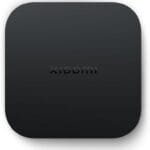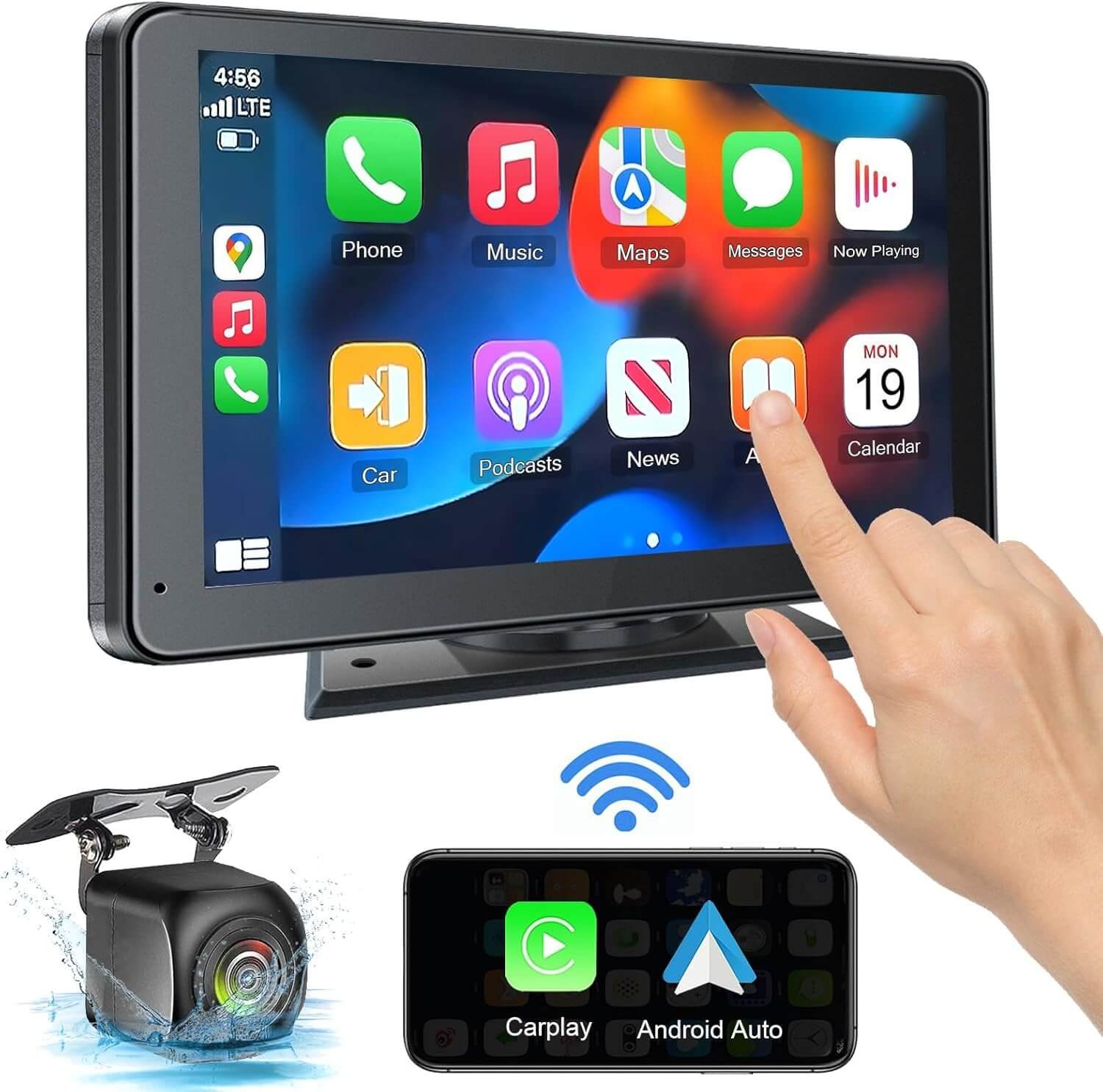Introduction to Smartwatches
Smartwatches are an innovative category of wearable technology that bridges the gap between traditional timepieces and advanced personal devices. Unlike conventional watches that primarily serve the purpose of telling time, smartwatches offer a plethora of functionalities that extend far beyond this basic feature. They are equipped with a variety of sensors, connectivity options, and applications that enable users to manage notifications, monitor fitness activities, track health metrics, and even make phone calls directly from their wrist.
The rise in popularity of smartwatches is attributable to several factors, including the increasing demand for health-conscious technology and the convergence of mobile capabilities into compact gadgets. Today’s consumers seek devices that enhance their lifestyle by providing seamless access to information and services, which traditional watches cannot accommodate. Moreover, with the advent of advanced technologies such as Bluetooth and Wi-Fi, smartwatches can interface with smartphones and other devices, allowing for real-time updates and interactions.
The technology powering these devices typically includes a touchscreen display, various sensors (such as accelerometers, heart rate monitors, and GPS), and often supports third-party applications designed for diverse functions. Operating systems, such as watchOS from Apple, Wear OS from Google, and Tizen from Samsung, facilitate various applications that enrich the user experience, tailoring functionality to individual preferences. The integration of voice assistants further elevates smartwatches, allowing for hands-free operation, which enhances convenience in daily tasks.
Overall, smartwatches have revolutionized the traditional concept of timekeeping by incorporating advanced technology, making them essential companions for individuals seeking a blend of functionality and style. As this segment of wearable technology continues to evolve, understanding what distinguishes smartwatches from traditional watches will enable consumers to make informed choices regarding their potential benefits.
Key Features of Smartwatches
Smartwatches have evolved significantly over the past few years, incorporating a range of features that enhance both functionality and user experience. One of the primary functionalities of these devices is fitness tracking, which enables users to monitor various activities such as steps taken, calories burned, and distance traveled. Many smartwatches are equipped with advanced sensors that track heart rate, sleep patterns, and even blood oxygen levels, making them invaluable tools for those aiming to improve their health and fitness.
In addition to fitness tracking, smartwatches offer extensive health monitoring capabilities. For instance, numerous models include ECG (electrocardiogram) functionality, which allows users to monitor their heart health directly from their wrist. This feature is particularly important for individuals with pre-existing health conditions, as it facilitates proactive management of heart-related issues. Other health-related functionalities may include stress management tools, mindfulness exercises, and reminders to stay active, all contributing significantly to a user’s overall well-being.
Notifications represent yet another crucial feature of smartwatches. Users can receive alerts for calls, messages, emails, and social media notifications directly on their wrist, which promotes seamless connectivity without the need to constantly check a smartphone. This capability enhances productivity, allowing individuals to manage their time and responses more effectively, particularly in professional settings.
Moreover, many smartwatches support a variety of apps that expand their functionality even further. From navigation and weather updates to music playback and mobile payments, these applications offer users the flexibility to customize their device according to personal preferences and lifestyle needs. The integration of these features into daily routines not only simplifies tasks but also encourages a healthier lifestyle, making smartwatches increasingly pivotal in modern society.
Understanding the Operating Systems
When selecting a smartwatch, one of the most significant factors to consider is the operating system (OS) that powers the device. The OS not only influences the overall performance and usability of the smartwatch but also determines the range of applications available to the user. The most prevalent operating systems in the smartwatch market include Wear OS, watchOS, Tizen, and others.
Wear OS, developed by Google, is designed for a variety of smartwatch brands and provides a user-friendly interface. It integrates seamlessly with Android devices and has access to a wide array of applications through the Google Play Store. This flexibility allows users to customize their experience, enhancing the smartwatch’s functionality. However, compatibility can be limited when paired with iOS devices, which may restrict access to certain features.
In contrast, watchOS is exclusive to Apple’s smartwatches, such as the Apple Watch series. This operating system offers a polished user experience, characterized by its fluid navigation and deep integration with the Apple ecosystem. Users benefit from features like Apple Pay, fitness tracking, and notifications, seamlessly synchronizing with iPhones and other Apple devices. The curated App Store ensures a selection of quality applications but may limit customization options compared to Wear OS.
Tizen, utilized by Samsung’s smartwatches, provides a robust alternative with a focus on fitness and health tracking. It offers several features tailored for wearables, including powerful battery management and an intuitive interface. While the app ecosystem is more limited than that of Wear OS or watchOS, it still supports a selection of essential applications for everyday use.
When choosing a smartwatch, understanding the underlying operating systems is crucial. The choice of OS will influence not only the usability and performance but also the range of available applications, thus affecting the overall experience. Evaluating these factors will help in selecting a smartwatch that best fits individual needs. In conclusion, a thorough comprehension of smartwatch operating systems enables users to make informed decisions, ensuring optimal device functionality and user satisfaction.
Factors to Consider When Choosing a Smartwatch
When selecting a smartwatch, there are several critical factors that can influence your decision. First and foremost, compatibility with your existing smartphone is essential. Most smartwatches are designed to work seamlessly with specific operating systems, such as iOS or Android. Therefore, determining whether a smartwatch is compatible with your smartphone’s ecosystem is crucial for optimal functionality.
Design preferences play a significant role in your choice as well. Smartwatches come in various styles, sizes, and materials. Some users may prioritize a sleek and modern aesthetic, while others might prefer a more rugged, durable design suited for outdoor activities. The watch face, strap options, and overall form factor can greatly affect your comfort and satisfaction with the device. Consider how the smartwatch complements your personal style and daily wear.
Battery life is another important aspect to consider. Smartwatches typically operate on rechargeable batteries, and their longevity can vary significantly between models. If you plan on using features like GPS tracking or active health monitoring throughout the day, you will want a smartwatch that can last long enough to accommodate your usage without requiring frequent recharging. Make sure to check the specifications and user reviews regarding battery performance before making a purchase.
Lastly, price is a determining factor for many consumers. Smartwatches can range from budget-friendly options to high-end models boasting advanced features. It is advisable to establish a budget prior to shopping and prioritize the features that are most important to you. Keep in mind that the most expensive model is not always the best; instead, seek a balance between your budget and the functionalities you need. By considering these factors, you can make a well-informed decision in selecting the right smartwatch for your lifestyle.
Popular Smartwatch Brands and Models
The market for smartwatches has grown exponentially, leading to a variety of brands and models catering to different user needs. Among the leading brands, Apple, Samsung, Garmin, and Fitbit are notable players, each offering a distinctive set of features that appeal to different audiences.
Apple’s smartwatch line, particularly the Apple Watch Series 8, is renowned for its seamless integration with iOS devices. It boasts features such as fitness tracking, heart rate monitoring, and an ECG app. The watchOS is user-friendly and allows for extensive app compatibility. However, its compatibility with non-Apple devices is limited, which could deter users who own Android smartphones.
Samsung, with its Galaxy Watch series, targets Android users, offering models like the Galaxy Watch 5. These smartwatches are known for their vibrant displays, comprehensive health metrics including sleep tracking and stress management, and a circular design favored by many. Nonetheless, users may find the smartwatch’s battery life slightly lacking compared to others in the market.
Garmin specializes in fitness-oriented smartwatches, such as the Garmin Forerunner series. These devices excel in providing detailed analytics for various sports and activities, making them ideal for serious athletes. They are built to withstand rigorous training but may come with a steeper learning curve for those not familiar with advanced functionalities.
Fitbit, now part of Google, is well-regarded for its health tracking capabilities, particularly in sleep monitoring and active lifestyle features. The Fitbit Versa 3 stands out for its affordability and ease of use, although its app ecosystem might not be as extensive as Apple or Samsung’s offerings.
Choosing the right smartwatch ultimately depends on individual preferences, whether one prioritizes health features, seamless integration with smartphones, or fitness tracking capabilities. Each brand has distinct advantages and could cater differently depending on user requirements.
Smartwatch Use Cases: Who Should Wear One?
Smartwatches are increasingly becoming a staple in modern life, catering to a wide range of users with diverse needs. Each demographic leverages the features of a smartwatch to enhance their lifestyle, thus making it a valuable investment for many.
Fitness enthusiasts are one of the primary demographics benefiting from smartwatches. These individuals often utilize their devices to track health metrics such as heart rate, steps taken, and calories burned. Advanced smartwatches also include GPS functionality, enabling users to map their runs or cycling routes accurately. Furthermore, the integration of health apps provides insights into overall well-being, making it easier for fitness enthusiasts to set and achieve their personal health goals.
Busy professionals find smartwatches particularly advantageous due to their seamless integration with smartphones. Notifications for emails, messages, and calendar alerts can be viewed directly on the wrist, enhancing productivity without the need to constantly check a mobile device. Many smartwatches offer features like voice assistants and shortcuts to frequently used applications, allowing professionals to manage tasks more efficiently throughout their workday.
Tech lovers are also inclined toward smartwatches as they often seek the latest advancements in technology. These users appreciate the constant updates and innovations that smartwatches bring, from customizable watch faces to the ability to download apps. For tech enthusiasts, smartwatches serve not just as functional devices, but also as a showcase of the latest in wearable technology.
In addition to these groups, smartwatches appeal to a variety of other demographics, including students and individuals managing health conditions. With the wide array of options available in the market today, different users can find a smartwatch that aligns with their specific needs and preferences, ultimately enhancing their daily routines. As the technology continues to evolve, it’s expected that the range of use cases will only expand, making smartwatches an ever-relevant accessory in everyday life.
The Future of Smartwatches
The landscape of smartwatch technology is rapidly evolving, with several trends indicating a promising future for these multifunctional devices. One notable advancement is the integration of smartwatches with smart home devices. As the Internet of Things (IoT) continues to expand, smartwatches are expected to serve as central hubs for controlling various smart home applications, such as lights, thermostats, and security systems, directly from the wrist. This capability will not only enhance convenience but also contribute to a more seamless user experience.
Furthermore, artificial intelligence (AI) is set to play a significant role in the future of smartwatches. With AI-driven algorithms, these devices can offer more intuitive interactions and personalized suggestions. For instance, users may benefit from AI features that analyze their daily habits, allowing for tailored fitness programs or reminders that adapt based on their behavior. This level of personalization could drastically improve user engagement and motivate individuals to lead healthier lifestyles.
Health monitoring capabilities are also anticipated to advance significantly in the coming years. Smartwatches are likely to offer more sophisticated sensors for tracking vital signs like heart rate, blood pressure, and even blood oxygen levels. Innovations could extend to non-invasive glucose monitoring, allowing diabetic patients to manage their condition more effectively. Such developments will empower users by providing deeper insights into their health metrics, enabling proactive management of their well-being.
Finally, as wearables become increasingly integrated into consumers’ daily lives, the focus on sustainability is expected to gain momentum. Future smartwatches may incorporate eco-friendly materials and emphasize energy efficiency, thereby appealing to environmentally conscious consumers. These trends suggest a future where smartwatches will not only enhance functionality but also prioritize user health and environmental responsibility, shaping a new era of wearable technology.
Common Questions About Smartwatches
As the popularity of smartwatches continues to rise, potential buyers often have numerous questions that need addressing to make an informed purchase. One common inquiry revolves around the compatibility of smartwatches with smartphones. Generally, most smartwatches are designed to work seamlessly with specific operating systems. For instance, Apple’s smartwatch is primarily compatible with iPhones, while many Android models can pair with a wider range of devices. It’s advisable to check the manufacturer’s guidelines before making a decision.
Another frequently asked question concerns battery life. Many users worry that smartwatches will require daily charging due to their advanced features. While it is true that the battery life varies significantly between models, many high-quality smartwatches can last up to several days on a single charge, especially when used in power-saving modes. Factors such as usage patterns, display settings, and installed applications can impact battery longevity; hence, understanding one’s usage habits is important.
Potential buyers might also question the necessity of having a smartwatch at all. Beyond merely telling time, smartwatches offer functionalities like fitness tracking, heart rate monitoring, message notifications, and GPS navigation. They can be particularly valuable for those engaged in fitness or outdoor activities, providing real-time data without the need for a smartphone. Additionally, many models incorporate customizable watch faces and apps suitable for personalizing the user experience.
When it comes to maintenance, users often underestimate the importance of caring for their devices. Regular software updates are crucial as they not only enhance performance but also ensure security features are up-to-date. Additionally, many smartwatches come with durable screens and water-resistant ratings, but it’s wise to consult the manufacturer’s instructions to maintain the device’s longevity. Ultimately, being informed about the essential features, compatibility, and upkeep can significantly enhance the smartwatch experience.
Conclusion and Thanks
In conclusion, selecting the ideal smartwatch involves careful consideration of various factors including design, functionality, compatibility, and overall lifestyle needs. As we discussed throughout this guide, understanding the specific features that different smartwatches offer is essential for making an informed decision. Whether you prioritize fitness tracking, notifications, music control, or health monitoring, there is a smartwatch tailored to meet your requirements. The influx of options available in the market today means you can easily find a device that integrates seamlessly with your day-to-day life.
Moreover, staying updated with the latest advancements in technology enhances your ability to choose the right smartwatch. Familiarizing yourself with different brands and their unique offerings allows for a well-rounded perspective, ensuring you select a product that not only fits your budget but also meets your expectations in terms of performance and durability. As manufacturers continue to innovate, it’s beneficial for consumers to remain adaptable and open to trying new features that could enrich their experience.
We appreciate your time spent reading our guide on smartwatches. We hope it has equipped you with the necessary insights to embark on your search for the perfect smartwatch. Remember that each smartwatch brings its own set of features designed to simplify and enhance your daily activities, making the right choice significant for personal productivity and enjoyment.
Thank you for engaging with this content. We wish you the best in your quest to find a smartwatch that complements your lifestyle. May your journey lead you to a device that not only meets your needs but inspires you to make the most of each day. We look forward to seeing you again in the future!





















